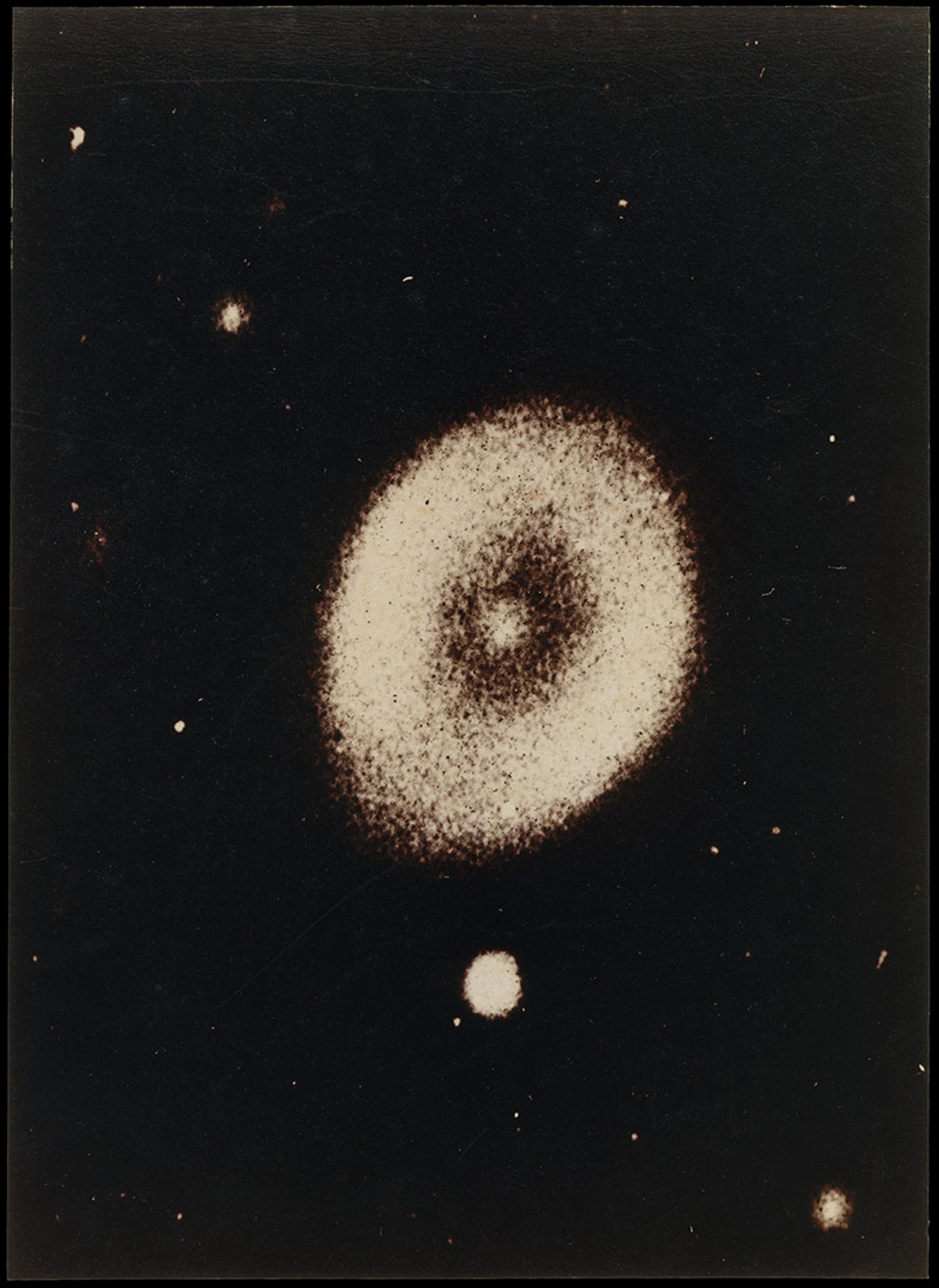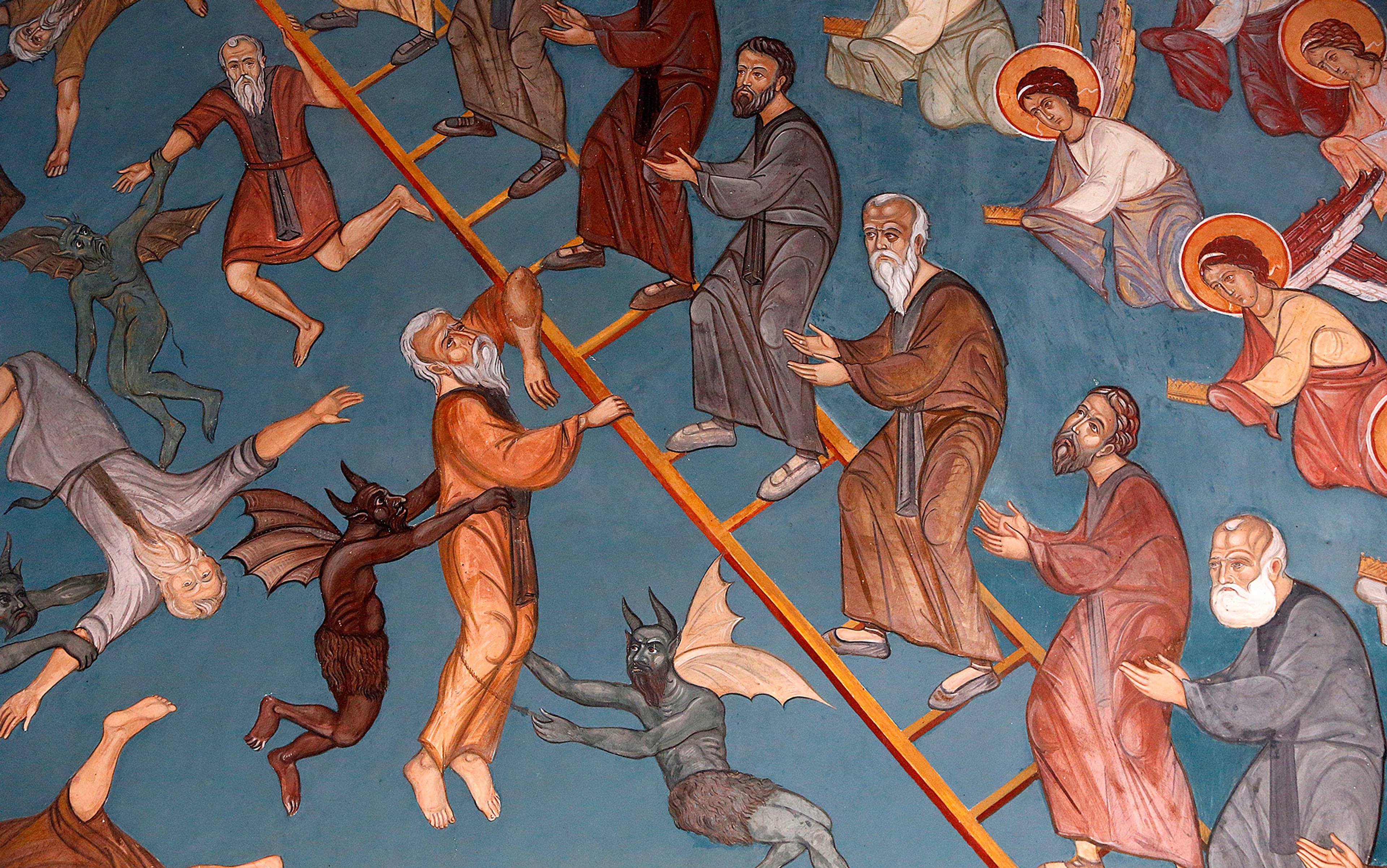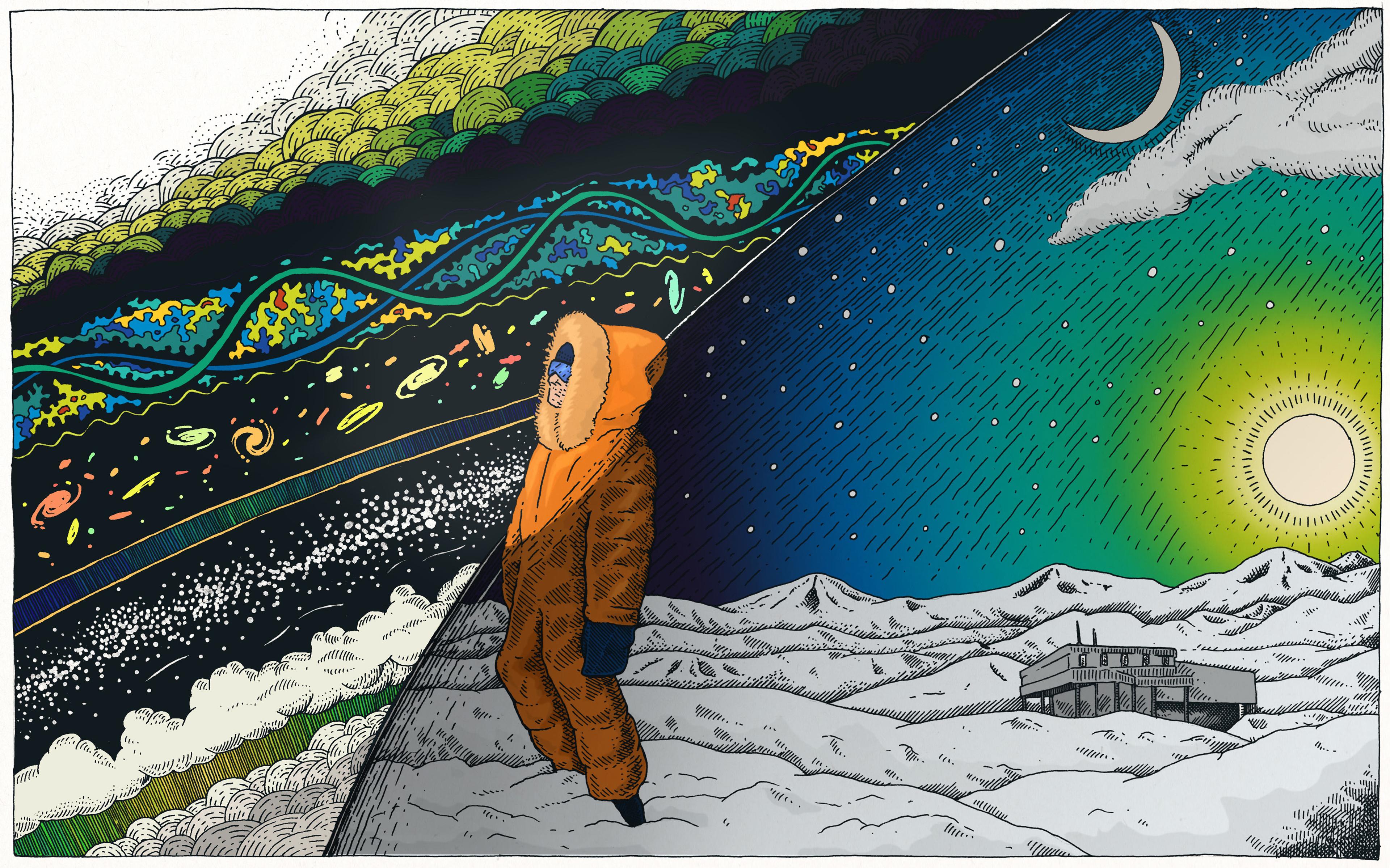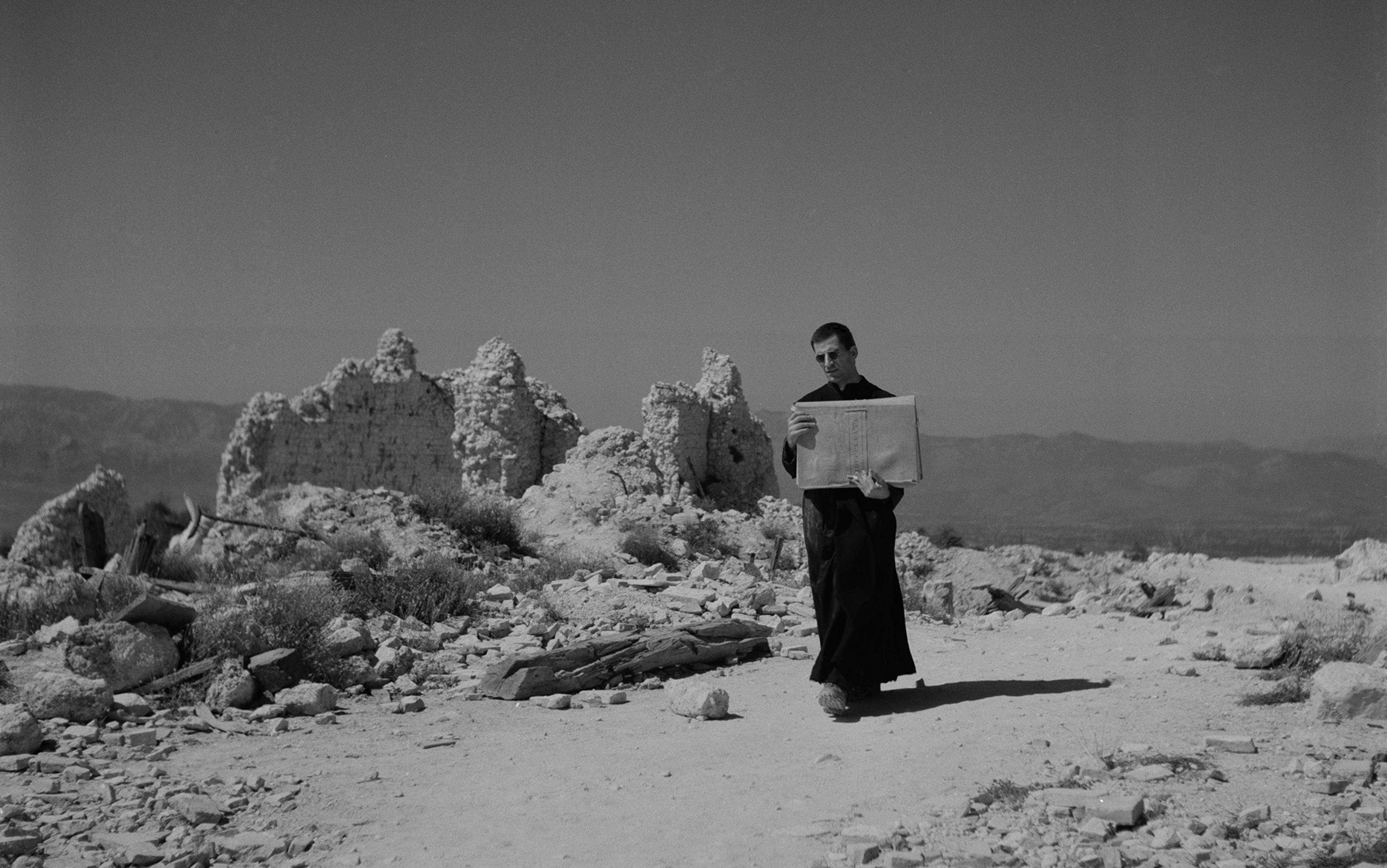The Description of Heaven (1623), by the astronomer Conrad Aslachus, feels close to many ideas about the afterlife still common in Christianity today: heaven is ‘a stately citie, where we shall be secure from all hurt,’ he wrote. There the virtuous dead will see God face to face: ‘we shall behold the bright companies of Angels; there shall wee view the radiant assemblies of sacred Patriarkes, Prophets, and Apostles; there shall wee observe the infinite number of Crownes, of joyfull and tryumphant Martyrs, and Saints.’ Heaven, for Aslachus, was a place of ‘wisdome without ignorance, memory without oblivion, understanding without errour, and reason resplendent without darknesse.’ Aslachus argued against anyone insisting that heaven was ‘in no place, but everywhere diffused’. Instead, his heaven was a distinct place in the universe, a specific locale – crucial for an astronomer working at a time when radical new ideas about the universe were challenging traditional beliefs.

Saint Stephen (c1575), from the workshop of Luis de Morales. Courtesy the Prado Museum, Madrid
The Christian concept of heaven, so familiar today from popular depictions of clouds and haloed angels, was an invention – one that came about as early Christians interpreted their religious writings in the context of the Greek culture in which their movement grew up. Christian writers combined Plato’s ideas about the soul’s ascent to the sky at death with Aristotle’s understanding of the structure of the universe, a combination that allowed them to apply a cosmological framework to terms like ‘heaven of heavens’, as well as the ascents, described in the New Testament, of both Jesus and Paul. By the Middle Ages, anyone who uttered the words ‘Our Father, who art in heaven …’ had a clear spatial understanding of where heaven was: God dwelt in the third heaven, above the heaven of the air and the heaven of the stars. This third heaven, the empyrean, became an article of Christian faith – until the new cosmology of Copernicus and Galileo placed the Sun rather than Earth in the centre of the universe. This transformation from an Earth-centred to a Sun-centred universe did not simply displace Earth; it destroyed heaven as a place within the cosmos.

Nebuleuse de la Lyre (c1885) by Paul and Prosper Henry. Courtesy the Met Museum, New York
If I asked my astronomy students where heaven was located, I would no doubt receive a classroom full of bewildered stares, despite the fact that I teach at a Christian university – where the majority of students believe in both heaven and the afterlife. When pressed, they might offer thoughts about heaven being a different plane of reality or perhaps another dimension. They believe, but they don’t conceptualise heaven as a location; it is not a part of their spatial understanding of the universe. For most of the history of Christianity, though, the opposite was true.
The first ideas of heaven that show up in the Bible are consistent with eastern Mediterranean culture: humans dwelled in the middle level of a flat, three-storied universe. The underworld below is the place of the dead, and the heavens above are the place of God or the gods. Even with its unique emphasis on monotheism, the Old Testament maintained hints of a heavenly pantheon in descriptions of the ‘host of heavens’ and language about God keeping council among the gods or stars. Humans ventured into these heavenly realms only rarely. Enoch, an ancestor of Noah described in the book of Genesis (written around 1000 BCE), was said to have been ‘taken’ by God, often interpreted as meaning he went directly to heaven; and the prophet Elijah, in the Old Testament book of Kings, was described as ascending to heaven in a fiery chariot in approximately the 9th century BCE. But both of these were notable as exceptions. The heavens were not the destination of those who lived a virtuous life. Good or evil, the dead dwelt in Sheol, the underworld.
The idea of ascent to heaven after death was more common among Greek philosophers, such as Plato. In Platonic thought, human souls originally came from the stars and re-ascended to them after death. The visible heavens, with their ceaseless, regular and uniform motions, were separate from the regions of physical change and decay below on Earth. For Plato, the heavens and their motions provided the model for the ideal, orderly motion of rational thought. Studying astronomy was a way for the human soul to reorient itself to the pure rationality of the heavens and prepare for return there after death.
Aristotle, a student of Plato, helped formalise Plato’s division between Earth and the heavens. The universe that Aristotle outlined in his writings was Earth-centred, with the four terrestrial elements – earth, water, fire and air – filling the regions below the Moon. The heavens were composed of a fifth element, the ether. This division of substance explained why the terrestrial regions were imperfect and subject to decay, whereas the heavens were eternal and unchanging. Within the heavens, seven wandering objects (the five visible planets, plus the Sun and the Moon) each had their own motion, but the stars moved together as though embedded on a sphere. This sphere of the fixed stars became the outermost boundary of the Earth-centred universe and was essential to eventual beliefs of the location of the Christian heaven.
The radical hope of Christianity needed not a Platonic realm of rational thought, but a physical place
For Aristotle, the region beyond the fixed stars was only a non-physical potentiality, defined by ‘neither place nor void nor time’. This may be why philosophers continued to place the realm of the dead within, not beyond, the starry heaven. Cicero, the Roman philosopher and politician, for instance, articulated a Platonic heaven in his On the Republic, in which the character Scipio dreams of the afterlife:
How long will your thoughts be fixed upon the lowly earth? Do you not see what lofty regions you have entered? These are the nine circles, or rather spheres, by which the whole is joined? One of them, the outermost, is that of heaven; it contains all the rest, and is itself the supreme God, holding and embracing within itself all the other spheres … below the Moon there is nothing except what is mortal and doomed to decay, save only the souls given to the human race by the bounty of the gods.
Early Christians, trying to make sense of accounts of the life of Jesus of Nazareth and the writings of his first followers in the 1st century, formulated their views of the afterlife in this Greek and Roman philosophical context. Plato provided the idea of souls ascending into heaven, but the texts that would become the Christian scriptures (the New Testament) emphasised a physical, bodily resurrection – most importantly in their claim that Christianity’s founder was himself resurrected in the body and ascended physically to heaven. If Jesus dwelled in heaven, with New Testament texts indicating his followers would join him there, the radical hope of Christianity needed not a Platonic realm of rational thought, but a physical place – a material heaven. Aristotle’s view of the universe, with its outermost sphere of the stars, gave Christians the conceptual framework to locate heaven on a map.
Yet the creation account in Genesis introduces confusion because it speaks of the heavens in two different ways. First, it describes God creating the heavens and Earth. But then it goes on to describe God creating a ‘firmament’ by dividing waters below from waters above. Reconciling the discrepancy was Basil of Caesarea, the 4th-century Cappadocian writer and bishop. The first of these heavens was the starry heaven and the dwelling of the virtuous dead, Basil explained, whereas the second was only the airy heaven, or sky.
Basil’s arguments pushed heaven from the clouds to the stars, but the final step in the invention of heaven went even further, placing the Christian heaven in a location beyond the stars. Again, precedent came not from scripture or theology but from non-Christian writers – in this case, Martianus Capella, the 5th-century Roman author. In his work On the Marriage of Philology and Mercury, Capella described an ‘Empyrean realm of pure understanding’ beyond the stars. From the 7th century, Christian writers such as Isidore of Seville and Bede took up this idea and, by the 12th century, the identification of the Christian heaven with the empyrean (from the Greek word for ‘fire’) was cemented. The Glossa ordinaria, a medieval collection of commentaries on the Bible, identified this third heaven, the empyrean heaven, with the realm first created by God in the Genesis account: ‘In the beginning, God created the heavens and the earth.’
The introduction of the empyrean into Christian cosmology was the final articulation of heaven as a specific location in the Aristotelean universe. The division of the cosmos into terrestrial regions (subject to change, death and decay) and celestial regions (perfect and eternal) already aligned well with theological ideas of a fallen world below and a perfect God above. It supported a three-fold view of the heavens – airy, starry and empyrean – that seemed to have a Biblical basis as well. An empyrean heaven beyond the heaven of air and the heaven of stars was obviously the ‘heaven of heavens’ of the Old Testament. It also fit New Testament passages referring to heaven. For instance, after resurrection, Christ was said to ascend to a place ‘above all the heavens’; the apostle Paul wrote of being caught up into the ‘third heaven’.
In this Christian cosmology, the first heaven was the heaven of the air, which extended from Earth’s surface to where the Moon separated the terrestrial and celestial realms. Above the airy heaven was the second heaven – the starry or celestial heaven – which extended from the Moon to the sphere of the stars, the boundary of the visible universe. Beyond this was the empyrean heaven, which was identified as the dwelling of God, the saints and the angels. Indeed, by the 1240s, ecclesiastical authorities in Paris specified that it was theologically erroneous to locate the Blessed Virgin Mary or the saints in any heaven except the empyrean. Others said that to deny the existence of the empyrean was to deny the foundations of Christianity. By the 13th century, the major theologians of medieval Europe, including Albertus Magnus, Bonaventure, Thomas Aquinas and Duns Scotus, embraced the concept.
The fact that the empyrean heaven was unobservable was not an issue because its existence had become a matter of faith. Campanus of Novara, the 13th-century astronomer and a contemporary of Aquinas, admitted that we could not know by rational argument whether there was anything beyond the sphere of the stars, but that ‘we are informed by faith, and in agreement with the holy teachers of the Church we reverently confess that, beyond it, is the empyrean heaven in which is the dwelling place of good spirits.’ Aquinas admitted the same: the empyrean could not be argued by sight or motion, like the celestial heavens, but rather was ‘held by authority’.
Heaven itself was dislocated – or rather, was shown to have no location at all
The empyrean heaven as the dwelling place of God and the saints became a significant facet of the Christian world. It was a common theme in art, and Dante Alighieri glimpsed it at the climax of his Divine Comedy (c1308-21) after he was led up from the centre of the cosmos through the lower heavens. Theologians speculated about how bodies could inhabit the empyrean, whether it extended infinitely, and whether it was created by God, or pre-existed God and provided the location of God’s creative acts. If you had asked a Christian from the Middle Ages before the time of Galileo where the heaven mentioned twice in the Lord’s prayer was, they would have pointed upward, toward the unseen empyrean heaven beyond the sky.

Dante and Beatrice gaze upon the Empyrean; engraving (c1867) by Gustave Doré, from Canto 31 of the Divine Comedy (c1308-21) by Dante Alighieri. Courtesy Wikimedia
For these observers, looking into the night sky was not looking into an infinite abyss; it was looking upward at an edifice of vast but limited extent, beyond which was the promised dwelling place of the Christian dead. As C S Lewis puts it:
[T]o look out on the night sky with modern eyes is like looking out over a sea that fades away into mist, or looking about one in a trackless forest – trees forever and no horizon. To look up at the towering medieval universe is much more like looking at a great building. The ‘space’ of modern astronomy may arouse terror, or bewilderment or vague reverie; [but] the spheres of the old [astronomy] present us with an object in which the mind can rest, overwhelming in its greatness but satisfying in its harmony.
Understanding how theology mapped onto location in this Earth-centred cosmos gives a sense of why the transition to a Sun-centred one was so disruptive. With the acceptance of Copernicus’s new view of the universe, Earth was dethroned from a position of ‘privilege’ at the centre of the universe but, more than that, heaven itself was dislocated – or rather, was shown to have no location at all. Telescopic observations from the time of Galileo indicated that the stars were scattered in a limitless space, not placed on a sphere surrounding the Earth. The celestial heavens were not enclosed, and there was no boundary to the universe beyond which the empyrean could be placed.
From the 16th century, many astronomers who accepted Copernicus’s new view of the universe nonetheless espoused the idea of a Christian heaven. Johannes Kepler believed the stars were arranged spherically around the Sun, leaving room for the empyrean beyond. Philip Lansbergen argued that the stars were God’s armies in the ‘forecourt’ of heaven and that the empyrean was still the third, unseen heaven. Thomas Digges, one of the first proponents of the Copernican system in England, made the infinite starry realm itself the ‘very court of celestial angelles … and … the habitacle for the elect’.
Giordano Bruno, on the other hand, was famously executed by the Catholic Church for envisioning an infinite not beyond the stars but within them.
Heaven was replaced by something much closer to a science-fiction vision of outer space
Otto von Guericke (1602-1686), a German inventor and natural philosopher, summarised changing ideas about the cosmos in 1672, noting:
[T]here are so many and such different opinions that there is no sound way of reconciling them. Some would have it that [the stars] are bounded by the outermost heaven … some say that they are bounded by the Supercelestial Waters; some say that they are bounded by the Empyrean Heaven; some by a plurality of Worlds, some by Imaginary Space; some by Nothing and some by a Void.
By the 17th century, in the wake of revelations of the telescope, consensus over the location of heaven was gone. The new astronomy of Copernicus and Galileo ultimately fractured ideas about the empyrean heaven and gave rise to widely different assumptions regarding its location or even its existence. Eventually, as a more detailed understanding of the starry realms developed, the empyrean heaven was displaced completely. By the end of the 18th century, a Catholic dictionary of theology could dismiss speculations about the physical location of heaven: ‘It should be the object of our desires and of our hopes and not of our speculations.’ The airy heaven became the atmosphere – a term first coined by 16th- and 17th-century astronomers; the celestial heaven became space, and the empyrean heaven – the ‘heaven of heavens’ and the dwelling place of God – disappeared from the universe.
In The Celestial Worlds Discover’d (1698), the astronomer Christiaan Huygens wrote about the inhabitants of the planets, speculating about their appearance, nature and sciences. The universe, Huygens was certain ‘is infinitely extended’ but filled with inhabited planets:
What a wonderful and amazing Scheme have we here of the magnificent Vastness of the Universe! So many Suns, so many Earths, and every one of them stock’d with so many Herbs, Trees, and Animals, and adorn’d with so many Seas and Mountains!
Heaven had disappeared from the universe, replaced by something much closer to a science-fiction vision of outer space.
Viewed from one perspective, the dislocation of the empyrean heaven from the physical universe is simply an example of the progress of science dismantling religious belief. But belief is seldom static, and the relationship between science and faith is one of dialogue as often as of conflict. Ideas about the Christian heaven were constructed in dialogue with contemporary knowledge of the world – at the time, Aristotelian ideas about the physical universe. When this view of nature was shown to be incorrect, ideas of heaven were modified accordingly. Astronomy forced Christian thinkers to admit that the empyrean heaven was never a central tenet of their faith to begin with and return to what contemporary theologians such as N T Wright consider a view closer to original Christianity: salvation not as an escape to a heaven beyond the universe but a stranger, more radical hope of renewal and re-creation of this one. An empyrean heaven was no more essential to Christianity, it turned out, than a motionless Earth – despite scriptures that seemed to argue for both.






